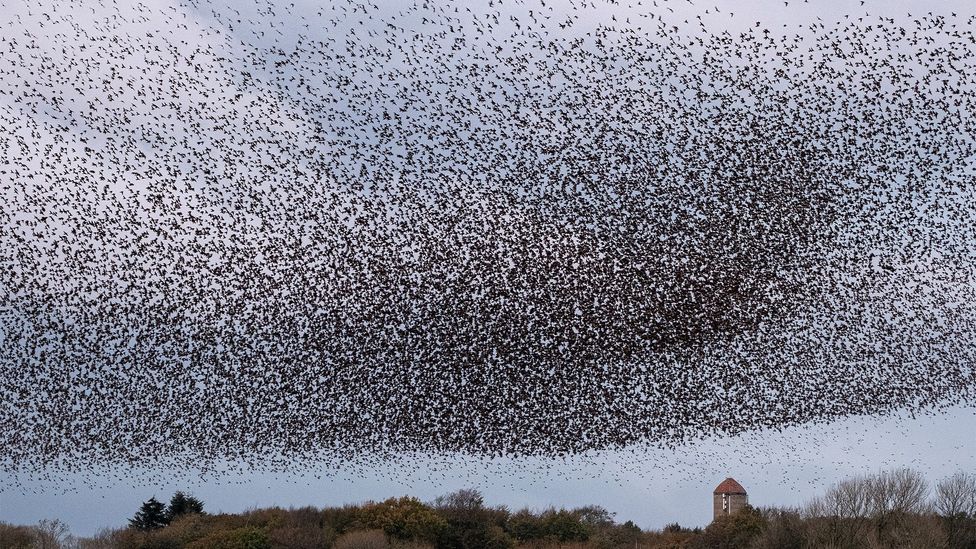When viewed individually, the humble starling, dressed in its dappled, green-sheen plumage, is handsome enough. But when the gregarious birds coalesce together in a vast, synchronised aerial dance, these small creatures create a spectacular – if somewhat mysterious – natural wonder: a murmuration.
Each spring and autumn, as the sun sets over the extensive wetlands in and around south-western Denmark's Wadden Sea National Park, as many as 1.5 million migrating starlings swoop and soar together in a seemingly spontaneous wave-like dance. As the birds swell together, the collective stir of their wings resembles the sound of a rushing waterfall, and they form cloud-like shapes so dark and dense that they've earned their own local description: Sort Sol, or "Black Sun".
Starlings have fascinated humans for as long as anyone can remember. The Ancient Romans believed their undulating patterns indicated the shifting moods of the gods. In Celtic mythology, starlings were associated with Brigid, the goddess of healing and fertility. After transfixing us with their shape-shifting abilities for thousands of years, the reasons why starlings dip, rise and swirl in unison is now generally known, but there is still no definitive explanation for how they manage to achieve these seemingly choreographed patterns.
These days, starling murmurations can be seen in locations as diverse as southern England's Brighton Pier, California's San Francisco Bay area and central Rome. But the wide horizons of Denmark's South Jutland County and the Wadden Sea coastal wetlands, which form the world's largest unbroken system of intertidal sand and mudflats, provide a unique, 360-degree perspective for both seasoned birders and casual visitors.
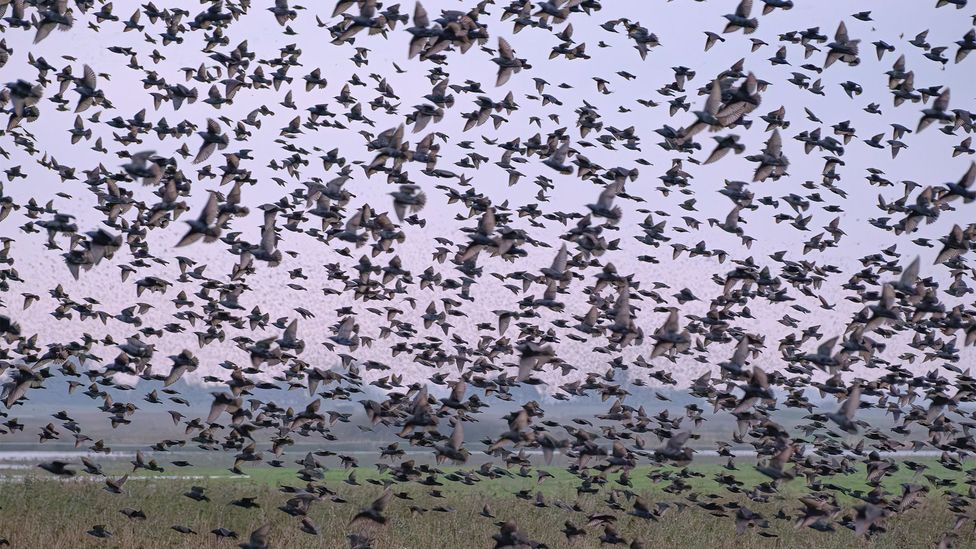
(Credit: Tim Bird)
At dusk, on an overcast and chilly day in late October, I followed Jesper Danneborg Voss, a jovial local nature guide from Sort Safari, to a dyke in the Tøndermarsken marsh near the German border. Voss could hardly contain himself as he crouched next to the dyke and waited patiently for the spectacle to start. When the fading sun slipped behind the clouds, an enormous flock of starlings, some 600,000 strong, appeared from all directions into the lakeside reeds. The birds descended and came within 20m from where we are sitting, the cacophony of their chirping and flapping wings creating a deafening sound. They then swooped up, before descending again.
As Voss and I watched the birds descending to roost, he explained what leads the starlings to congregate twice a year. "The birds [spend] the summer up in Finland, Sweden or Siberia, and when it gets cold up there and the ground starts to freeze, they start to migrate south, stopping here because the conditions are fantastic. They stay here one or two months before heading south to Belgium and England, then they fly north again in spring, congregating here again."
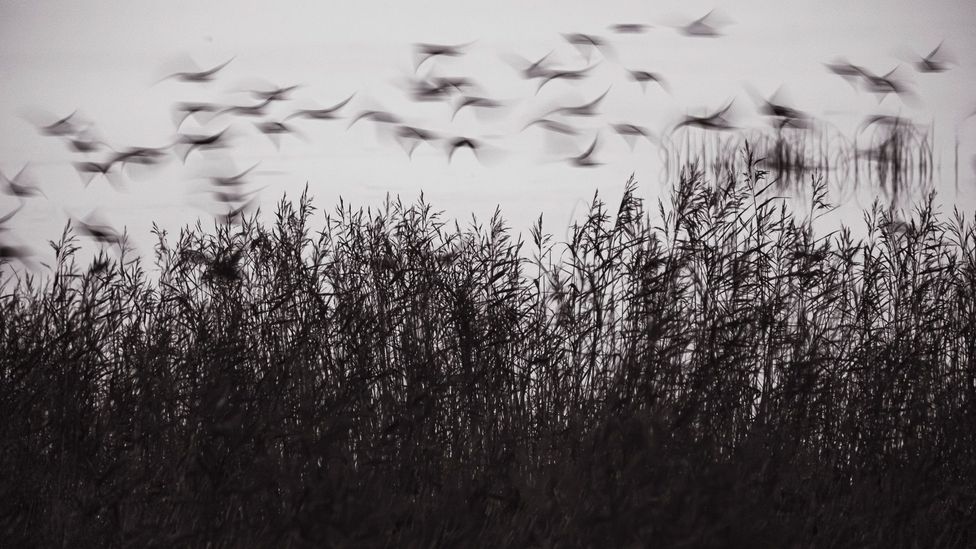
(Credit: Tim Bird)
According to Voss, this corner of south-western Denmark has an abundance of snails, larvae and fallen fruit, which makes it an ideal temporary home for the starlings. The marshland's tall reeds also provide a perfect night-time shelter to protect the birds from predators, which include hawks, kites and foxes. "The birds sleep in a vertical position, clutching the reed stems, with up to five birds per stem," Danneborg Voss said. "Their heart rhythm goes down and they relax. They move closer together, cosy and warm, 2m above the water. Thermal imaging has shown that the starlings' body heat at night is 31C, even if the outside temperature is a lot less."
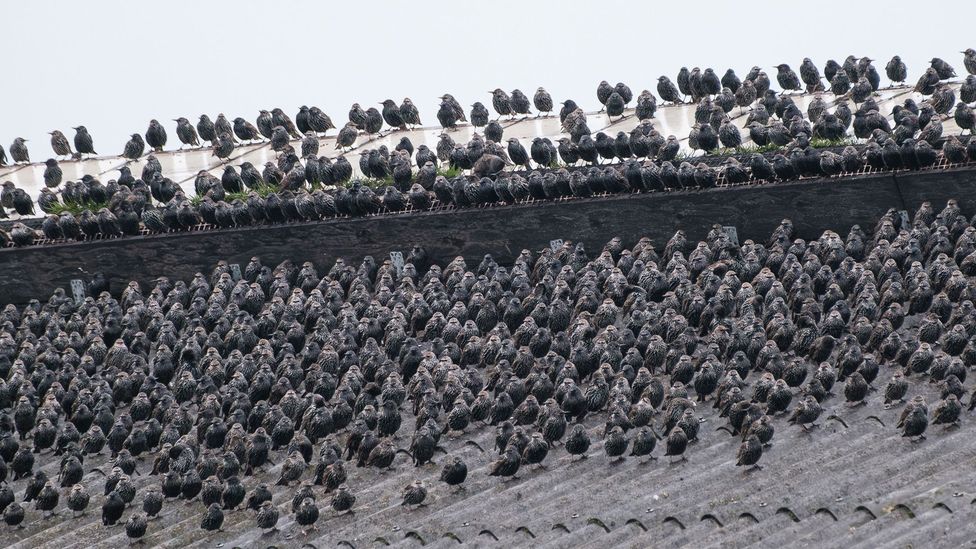
(Credit: Tim Bird)
As the sun begins to rise, the starlings depart from their chosen resting place in a sudden, massive and noisy commotion, dispersing across the marshland to feed in small groups, often surveying their options from barn rooftops. In the evening, the birds begin to assemble again, appearing like small plumes of smoke on the horizon, before joining forces and descending in larger masses. Some of the first arrivals scout out the best roosting spots for the coming night. If predators are detected, the birds will arise again in beautiful, spontaneous formations: that's when the murmurations happen.
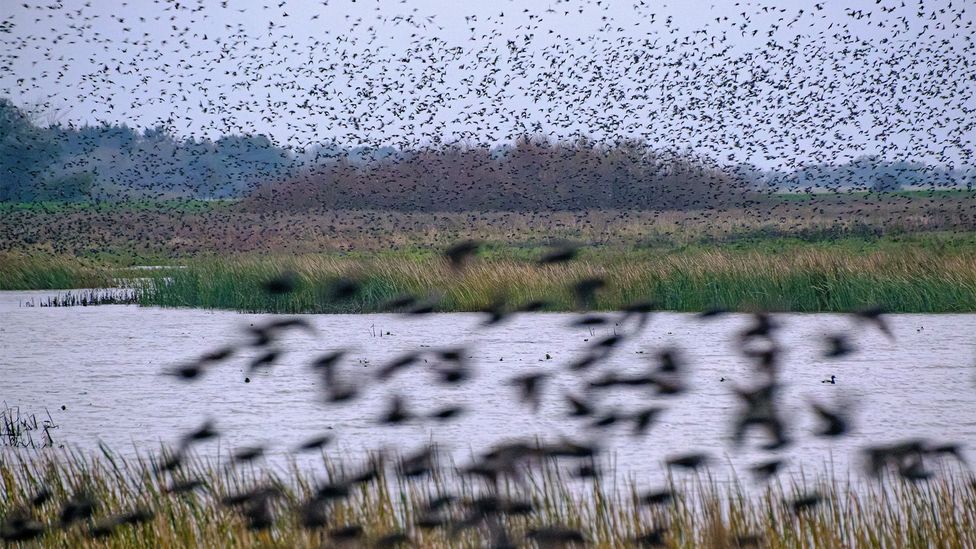
(Credit: Tim Bird)
Scientists have recently started to study the secrets behind these formations in detail. While the exact ways in which starlings coordinate their murmurations and communicate to one another within them remains something of a mystery, many experts think that the reason they move as a single, unified organism has to do with safety in numbers. As Voss explained, predators get confused by their shifting shapes, the density of which makes it harder for a hawk, kite or eagle to pick out individual victims. Some zoologists also believe that starlings' aerial ballets help them stay warm at night by signalling to the flock to come together and roost ahead of a cold night.
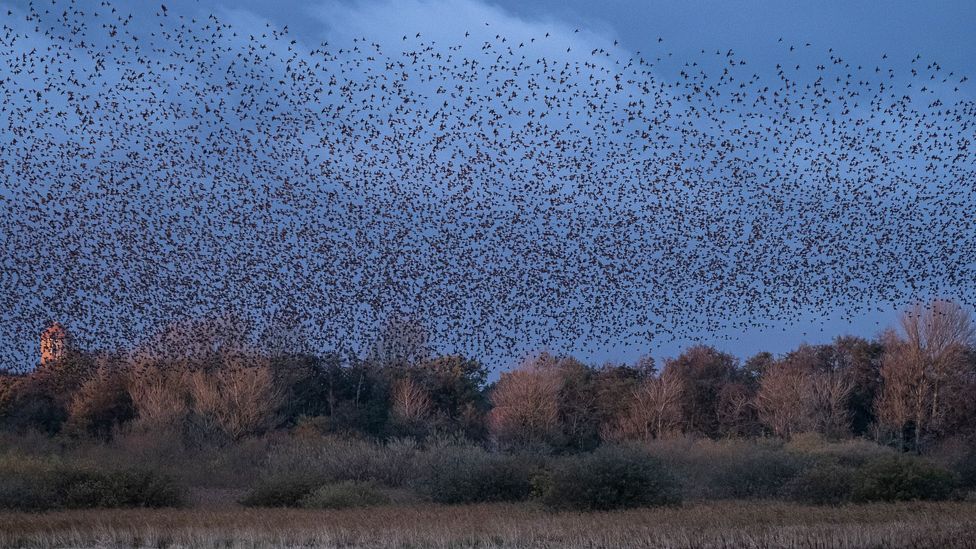
(Credit: Tim Bird)
In addition to their eye-catching murmurations, starlings have an uncanny ability to imitate sounds. It issaid that the Roman emperor Nero kept a starling that was able to speak both Greek and Latin. The composer Mozart, perhaps inspired by the starling's choral talents, had one in a cage next to his piano.
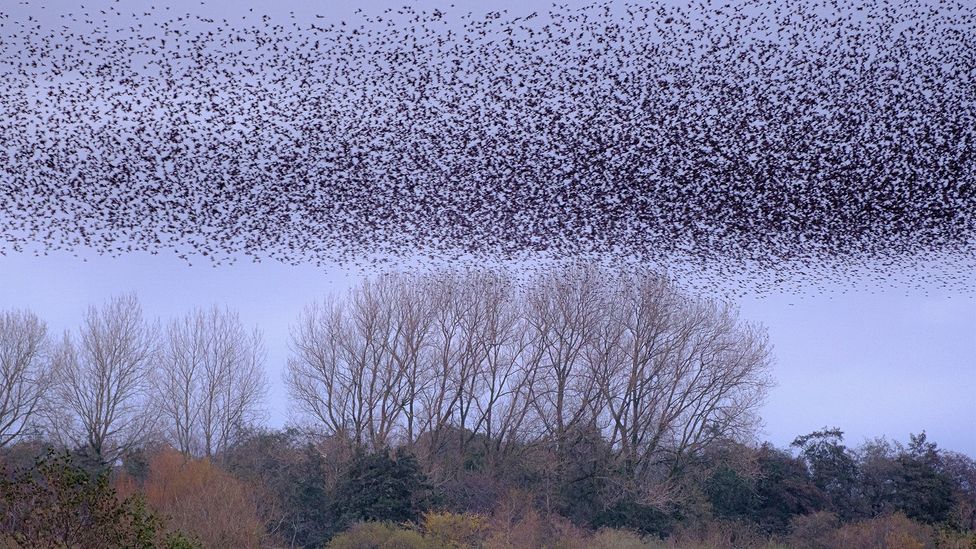
(Credit: Tim Bird)
As with any natural spectacle, such as seeing the Northern Lights, witnessing a volcanic eruption or spotting a rare animal, experiencing a murmuration isn't always a given. The marshes and dykes around the Tøndermarsken wetlands – and even the area just across the German border – are popular starling roosting zones and therefore good murmuration-spotting spots. September and October are the best viewing times, and the towns of Højer and Tønder, which have a range of good restaurants and accommodation, make great bases to explore the Wadden Sea National Park. The chateau-style Hotel Schackenborg, some 3km west of Tønder, is an especially elegant option. But to increase your odds of seeing the formations, it helps to hire an expert guide like Voss who keep a close eye on the behaviour of the birds.
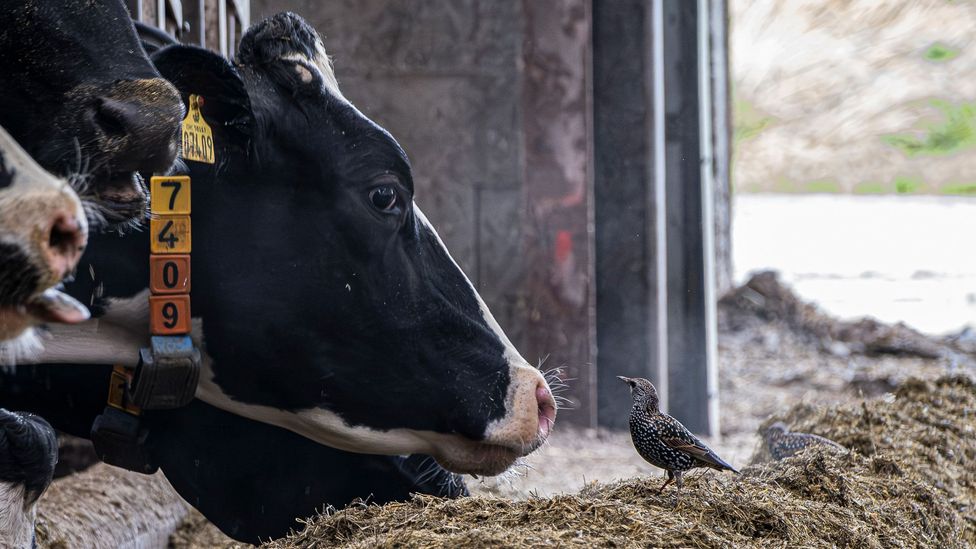
(Credit: Tim Bird)
While visitors come here from across Denmark, Germany, France and the Netherlands to witness South Jutland's dramatic bi-annual bird show, not everyone adores the starlings' mass migration. The birds regularly wander into local cow sheds, sometimes by the hundreds or thousands, to feast on cattle feed left by farmers. In in Rome, where as many as four million starlings gather each winter as they migrate south to Africa, the birds excrete so many droppings that they create a safety hazard – leading one man to try to herd millions of them with lasers.
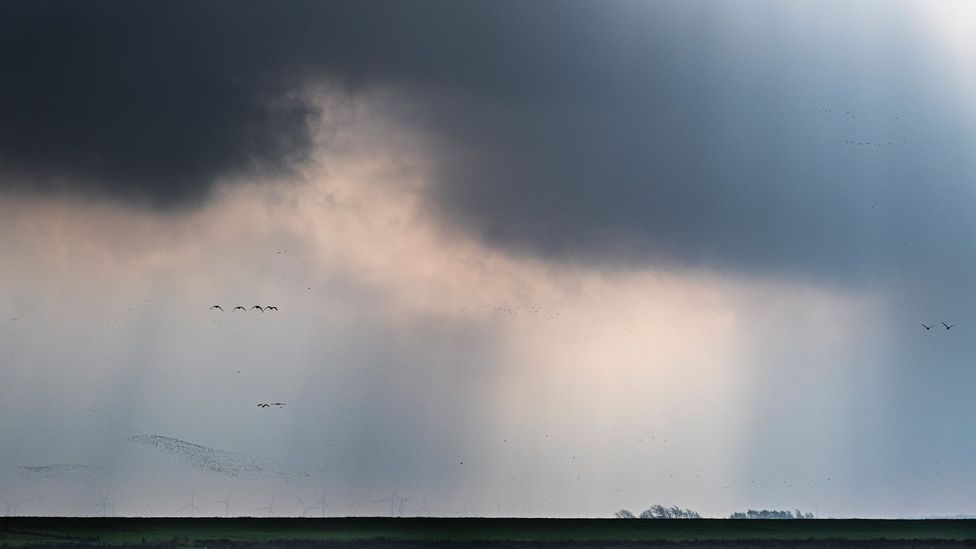
(Credit: Tim Bird)
The Wadden Sea National Park is a Unesco World Heritage site that's home to a rich variety of birdlife – and not just starlings. Enormous flocks of barnacle and grey geese gather here in the winter months, while falcons, herons, swans and lapwings are also common sights. The Wadden Sea Centre, located near the town of Ribe, houses excellent introductions to the region's varied wildlife. They include good presentations and exhibits about the murmuration and every aspect of the starlings' extraordinary behaviour, placing it in the broader context of the region's unique environment. The museum is also a good place to get information on local guides and tips about the best viewing locations.
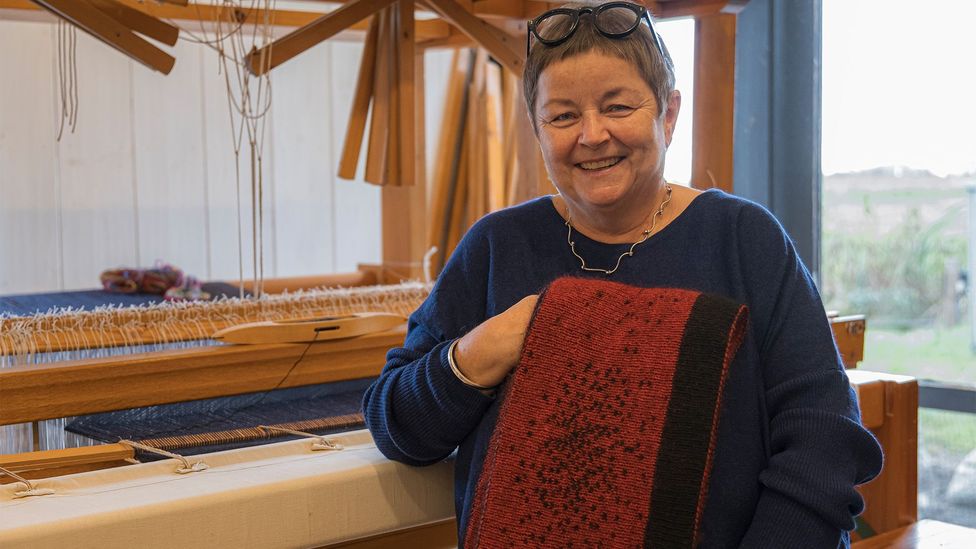
(Credit: Tim Bird)
There is a majestic drama to the wide, flat landscapes in this part of Denmark. It lends itself perfectly to bicycle explorations between picturesque towns such as Højer and Tønder. "This part of Denmark is very inspiring," said artist and weaver Hanne Sönnichsen. As we sat near the loom at her showroom and studio in Højer, she showed me a scarf she had designed that was inspired by the "Black Sun". "It reminds me of the enormity of nature. The dance of the starlings is inspiring visually, but the incredible sound of the birds is also inspiring, [as is] the sudden silence that follows when they settle to roost. There are so many other birds, too. On my morning walks, I can hear the geese, swans and then sometimes another sound, something new. I find it easy to breathe. You can stretch your eyes here, we say."
BBC Travel's In Pictures is a series that highlights stunning images from around the globe.
---
Join more than three million BBC Travel fans by liking us on Facebook, or follow us on Twitter and Instagram.
If you liked this story, sign up for The Essential List newsletter – a handpicked selection of features, videos and can't-miss news delivered to your inbox every Friday.
